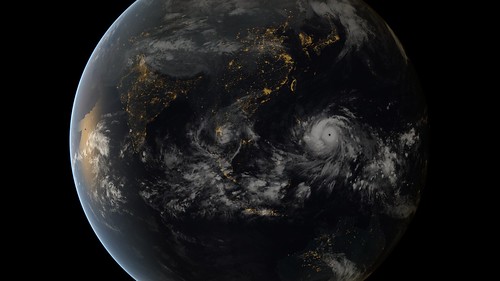Social media has become a fast and reliable source of news and information on current events and other world issues.
Recently, people have been resorting to social media to spread information about disasters and calamities. Users share different types of news and advice through hashtags.
In order for the right information to reach the right people, here are tips on properly harnessing the power of social media to give out information that matters.
 Courtesy of Hashtags.org Analytics
You can also include the year, intensity, location and other specifics to refer to the natural disaster with more accuracy. Several typhoons and disasters hit the same area each year but providing the right descriptions will bring the audience to the right topic.
Courtesy of Hashtags.org Analytics
You can also include the year, intensity, location and other specifics to refer to the natural disaster with more accuracy. Several typhoons and disasters hit the same area each year but providing the right descriptions will bring the audience to the right topic.

 Courtesy of Hashtags.org Analytics
You can also make hashtags that generally share information on how things are unfolding in the affected areas. Make use of social media leaders and others with wide reach and influence to get the message across. They can further talk about the disaster in their own blogs and can exchange information by uploading photos, articles and other types of content.
Courtesy of Hashtags.org Analytics
You can also make hashtags that generally share information on how things are unfolding in the affected areas. Make use of social media leaders and others with wide reach and influence to get the message across. They can further talk about the disaster in their own blogs and can exchange information by uploading photos, articles and other types of content.
 Courtesy of Hashtags.org Analytics
As of 24 November 2013, the hashtag #Haiyan (BLUE) has hit over 660,000 tweets, while its Philippine name #YolandaPh (RED) has reached more than 30,000 tweets.
Courtesy of Hashtags.org Analytics
As of 24 November 2013, the hashtag #Haiyan (BLUE) has hit over 660,000 tweets, while its Philippine name #YolandaPh (RED) has reached more than 30,000 tweets.
 Courtesy of Hashtags.org Analytics
Using the right hashtags and providing a good description of particular events will be helpful in saving more people?s lives and getting other countries and world organizations involved and engaged. Thanks to the speed of information dissemination via social media, crises are responded to more quickly and people from all over the world get to better understand the situation.
Courtesy of Hashtags.org Analytics
Using the right hashtags and providing a good description of particular events will be helpful in saving more people?s lives and getting other countries and world organizations involved and engaged. Thanks to the speed of information dissemination via social media, crises are responded to more quickly and people from all over the world get to better understand the situation.
Creating A Crisis-Related Hashtag
1. Use specific terms
Begin by searching for the different names given by countries to refer to the same disaster. In the case of the recent super typhoon, it was referred to as #Haiyan by international communities. The Philippines, which has its own list of names to refer to typhoons that hit each year, refer to the same super typhoon as #YolandaPh?(Yolanda). Using both hashtag permutations will lead more people to the right conversation and encourage more people to share news and updates regardless of their location.2. Use proper descriptions
There are also other hashtag permutations that can be used to lead more people to the discussion. Use adjectives or general terms to describe the calamity, such as #supertyphoon, #typhoon, #disaster, #stormsurge, etc. Here's how the hashtags moved in the three days to 24 November 2013. Courtesy of Hashtags.org Analytics
Courtesy of Hashtags.org Analytics3. Use locations
You can also include specific locations that are or may be affected by the disaster. In the case of Haiyan, areas such as Leyte, Samar, Palawan and other areas should be included in the hashtag to properly direct people to the specific topic where they could get more information or send help, like #TindogTacloban ("Rise Up Tacloban").
4. Use programs and apps
There are available applications on the internet where hashtag permutations can be made based on existing ones in different social media networks. Hashtag analytics tools will effectively show which hashtags are currently trending well and if there are related ones available that will more quickly spread information among social media users. You can get suggestions from the program to keep people updated with developments.5. Find related hashtags
One of the best approaches to bring in more relevant users to the conversation is to include the most popular hashtags that talk about the same subject matter. Include these in your tweets. Use 2 to 4 hashtags to invite more people to the topic. You can also specify aspects of the disaster and aid campaign. Make hashtags that are specifically for donations and providing relief and support. In the case of #Haiyan, we find that the top two related hashtags are #Philippines and #YolandaPh (as at 24 November 2013). Courtesy of Hashtags.org Analytics
Courtesy of Hashtags.org Analytics Courtesy of Hashtags.org Analytics
Courtesy of Hashtags.org Analytics Courtesy of Hashtags.org Analytics
Courtesy of Hashtags.org Analytics


